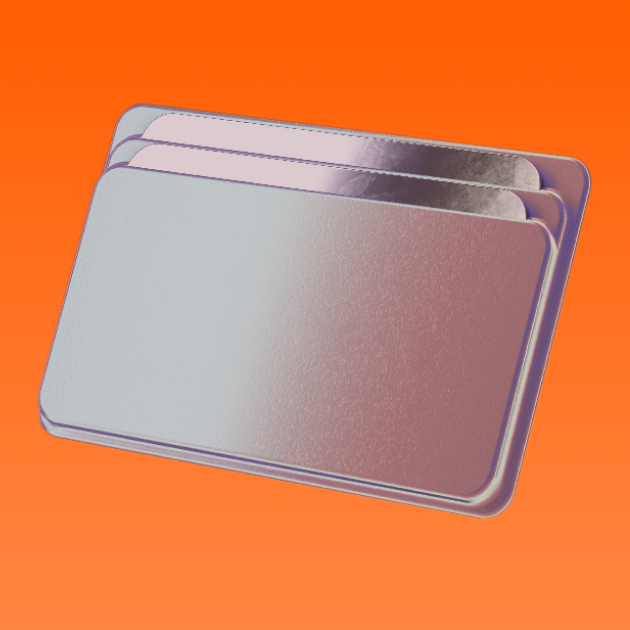Why you should have multiple crypto wallets
Learn why having multiple crypto wallets can help you avoid losing all of your funds in the event of an attack in our comprehensive guide.
By Sankrit K

Crypto wallets are the linchpins of decentralized finance (DeFi).
These simple lines of code provide a secure way to store, send, and receive cryptocurrencies like Bitcoin and Ethereum.
With the rising popularity of crypto, however, the risk of theft and fraud has also increased. In the last few years, crypto-related thefts, hacks, and frauds resulted in losses of $1.9 billion in 2020, $3.3 billion in 2021, $4 billion in 2022, and $343 million last month in November 2023 alone.
As a beginner to the world of cryptocurrency, it is crucial to understand the importance of wallet security to safeguard your digital assets. Creating and maintaining multiple cryptocurrency wallets is a good way to secure your assets.
In this article, we'll discuss why keeping multiple crypto wallets is a smart move and teach you how to set them up effectively.
Risks of having a single wallet
Most new entrants into the crypto space assume their assets are completely safe because they have written down their passphrase. While this is a reasonable point of view, there still may be risks depending on how you are using your wallet and what kind of wallet you are using.
Remote access to your hot wallet
If you are using only hot wallets, like the MetaMask Chrome extension, for example, there is always a risk of someone gaining remote access to your wallet, which can potentially result in the theft of your entire balance of crypto assets.
This could happen by cybercriminals introducing malware or installing keystroke loggers onto your device and then using the information to gain access to your wallet.
Many users also choose to store cryptocurrency in cold wallets like Ledger as an added layer of security against the risks that hot wallets carry. Hardware wallets provide some protection against malware and other scams that are prevalent among online wallets, and give users greater control over assets without input from third parties.
Connecting to compromised websites
When interacting with dApps on the internet, you are usually required to connect your wallet to the website or platform and authorize transactions. Ideally you should connect your wallet only to legitimate websites.
But even with a legitimate website, there is always a risk of it being hacked at some point in time.
Say you authorize a website to sign transactions on your behalf and the website gets taken over by a malicious actor. In this scenario, a hacker could steal all the funds in your wallet at once, even if you are not near the device on which you have the wallet extension enabled.
Security benefits of multiple crypto wallets
Diversifying your cryptocurrency holdings across multiple wallets is a recommended best practice.
When you divide your cryptocurrency among several wallets, you reduce the risk of losing your entire investment if one wallet is compromised.
Additionally, using different types of wallets can provide further security benefits, as different wallet categories have their own strengths and weaknesses. This can include custodial wallets, non-custodial wallets, hot wallets, and cold wallets. Some non-custodial wallets like Zengo have built-in features that let you create multiple wallet addresses under a single account.
One event that showed the importance of having multiple wallets is the 2014 Mt. Gox hack, which resulted in the loss of around 744,000 Bitcoins (worth over $460 million at the time).
The hack was possible because Mt. Gox kept all of its customers' Bitcoins in a single hot wallet, which was vulnerable to a security breach.
If the company had used multiple wallets and spread out its customers' holdings, the damage caused by the hack might have been greatly reduced.
Key takeaway: By spreading out your investments across different types of wallets, you can reduce the risk of a single point of failure and increase the overall security of your cryptocurrency holdings.
How to create and manage multiple crypto wallets
Creating and managing multiple crypto wallets can seem daunting at first, but it's not as complicated as it might seem.
The process largely depends on the type of wallet you choose, but here are some general tips and best practices to follow:
- Choose your wallet types: Select the types of wallets that fit your investment strategy and security needs. Consider the benefits and drawbacks of each type, such as hot, cold, hardware, software, and paper wallets.
- Create your wallets: Follow the instructions provided by the wallet provider to create and set up each wallet. Make sure to save your recovery phrases, private keys, and passwords in a secure place. Never store them digitally.
- Name your wallets: Give each wallet a unique name that reflects its purpose and type. This will help you keep track of your investments and avoid confusion.
- Secure your wallets: Use strong passwords, two-factor authentication (2FA), and other security measures to protect your wallets from unauthorized access. Keep your passwords and recovery phrases in a safe and secure location, such as a hardware wallet or a password manager.
- Test your wallets: Before transferring any significant amounts of cryptocurrency to your new wallets, test each one by sending a small amount of cryptocurrency to make sure it works correctly.
- Manage your wallets: Keep track of your cryptocurrency holdings across all your wallets. Regularly check your wallets for updates and security alerts, and stay up-to-date on the latest security best practices.
- Use your wallets wisely: Avoid using public Wi-Fi or unsecured devices when accessing your wallets, and only use trusted and reputable crypto exchanges and platforms for transactions.
By following these best practices, you can create and manage multiple crypto wallets effectively and enhance the security of your cryptocurrency investments. Remember that two of the keys to wallet security are to eliminate single points of failure and implement multiple layers of protection.
Begin your crypto journey with MoonPay
Once you get set up with your preferred wallet, it’s time to buy crypto.
To get started, simply buy Bitcoin or your preferred crypto using your credit card or any other payment method.






